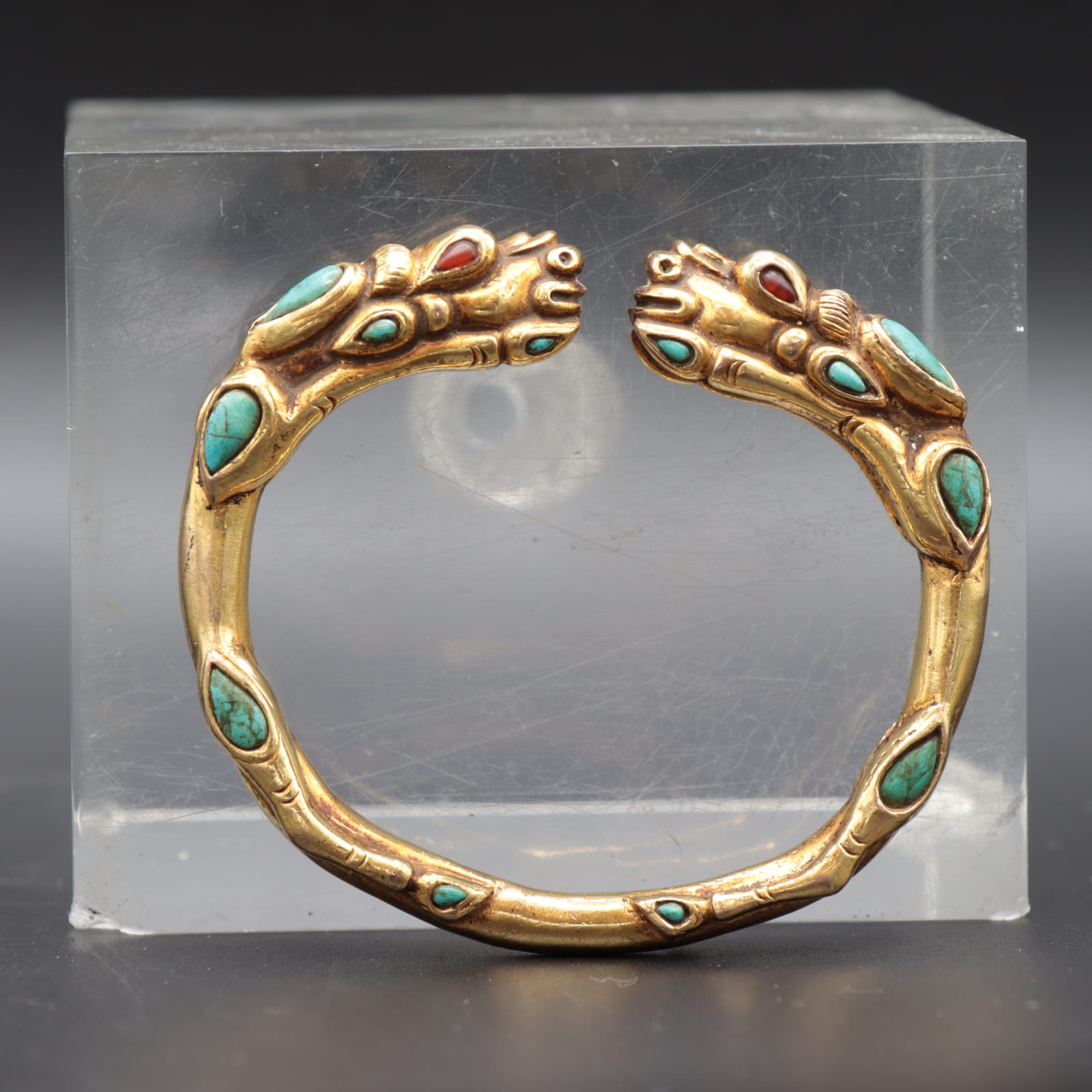Sino Tibetan Gold Makara Kada with Turquoise and Ruby Inlay, 17th - 18th Century
Gold
7 x 7.5 cm
2 3/4 x 3 in
weight: 132g
2 3/4 x 3 in
weight: 132g
LI.3012
This elaborately designed bracelet is a testimony to forms of ancient Vedic motifs and their artistic influence on Sino-Tibetan jewellery from the Qing Dynasty. The ornately crafted terminals of this...
This elaborately designed bracelet is a testimony to forms of ancient Vedic motifs and their artistic influence on Sino-Tibetan jewellery from the Qing Dynasty. The ornately crafted terminals of this Kada (bracelet) take the shape of two confronting Makara heads, a legendary mythical aquatic serpent often likened to the crocodile. The eyes of the sea creature are decorated with rubies and either edge of the body is encrusted with an elegant turquoise stone pattern. This bracelet was most commonly presented as a marital offering.
The Makara an embodiment of Hindu and Buddhist mythology is the Sanskrit word meaning water monster. This sea creature serves as a vehicle for Ganga: the Hindu river goddess, whereby the Makara is generally believed to be imbued with properties often associated with strength, fertility, virility and fierceness; an attribute to its relationship with water. Throughout the Indian subcontinent, these creatures are regarded as guardians of thresholds and entryways, with their heads often embellishing entrances to temples, functional objects and the bodies of worshippers, in the form of jewellery.
Makara is also linked to Kama, the god of love, in the force of Makaradhwaja, the offspring of the Hindu god Hanuman, hence Makara’s association with virility, love and desire. Additionally, in Hindu astrology, it represents a sign that is equivalent to the zodiac sign of Capricorn.
The Makara an embodiment of Hindu and Buddhist mythology is the Sanskrit word meaning water monster. This sea creature serves as a vehicle for Ganga: the Hindu river goddess, whereby the Makara is generally believed to be imbued with properties often associated with strength, fertility, virility and fierceness; an attribute to its relationship with water. Throughout the Indian subcontinent, these creatures are regarded as guardians of thresholds and entryways, with their heads often embellishing entrances to temples, functional objects and the bodies of worshippers, in the form of jewellery.
Makara is also linked to Kama, the god of love, in the force of Makaradhwaja, the offspring of the Hindu god Hanuman, hence Makara’s association with virility, love and desire. Additionally, in Hindu astrology, it represents a sign that is equivalent to the zodiac sign of Capricorn.
